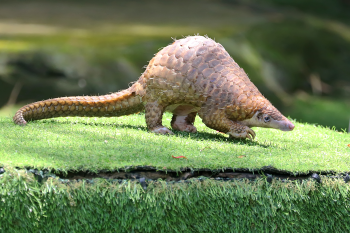
Since the beginning of the COVID-19 pandemic, substantial interest and research effort has been devoted to identifying the origins of Severe Acute Respiratory Syndrome Coronavirus 2 (SARS-CoV-2). The complex transmission and genetic recombination dynamics of SARS-CoV-2 between multiple host species, namely bats, pangolins, and humans, has complicated the process of definitively identifying the virus’ origins. Gaining a better understanding of the origin and evolution of SARS-CoV-2 may provide valuable information about future pandemic risk and reveal important details and mechanistic insight into how the disease emerged.
Dr. Justin Bahl, a CEIRR investigator from the Center for Influenza Disease & Emergence Research (CIDER), was a contributing author on a study conducted by Dr. Jonathan Arnold’s laboratory, a professor from the University of Georgia’s Department of Genetics. The study was recently published in Scientific Reports.

The authors constructed a consensus species tree, a summary of the evolutionary relationships among a group of species based on the analysis of multiple genes. The consensus tree was based on 11 genes from human, bat, and pangolin beta coronavirus samples that were collected before April 2020. The tree was built using maximum likelihood, a method that evaluates possible tree topologies based on the probability of observing the given sequence data. To map the recent exchange of genetic material between bat and pangolin beta coronaviruses before it was transferred to humans, the authors employed coalescent theory, a strategy to improve understanding of the genetic diversity patterns in populations and species. From their investigations, the authors were able to reconstruct an ancestral sequence of human SARS-CoV-2, which differed by only two nucleotides from the Wuhan sequence isolated during the original human outbreak. Additionally, they estimated the time to most recent common ancestor as December 8th, 2019, and determined that it originated from bats.
The evidence presented by the authors suggests repeated and ongoing zoonotic transfers between bats and pangolins which highlights the animals’ potential to serve as reservoirs for future zoonotic beta coronavirus transfer to humans. The findings also improve our understanding of the recent evolutionary history and likely origins of SARS-CoV-2 and provide new insight into the viral selection dynamics early in the pandemic. Finally, their work illustrates an advanced phylogenetic approach to assess SARS-CoV-2 origins from multiple genes and a new framework of human SARS-CoV-2 mutation classification.